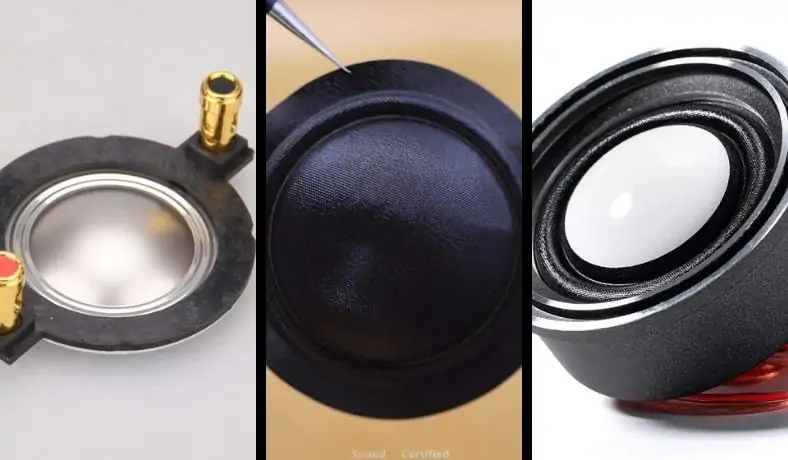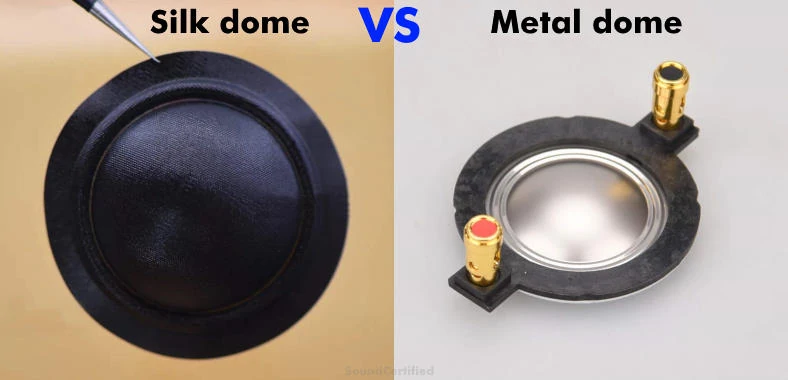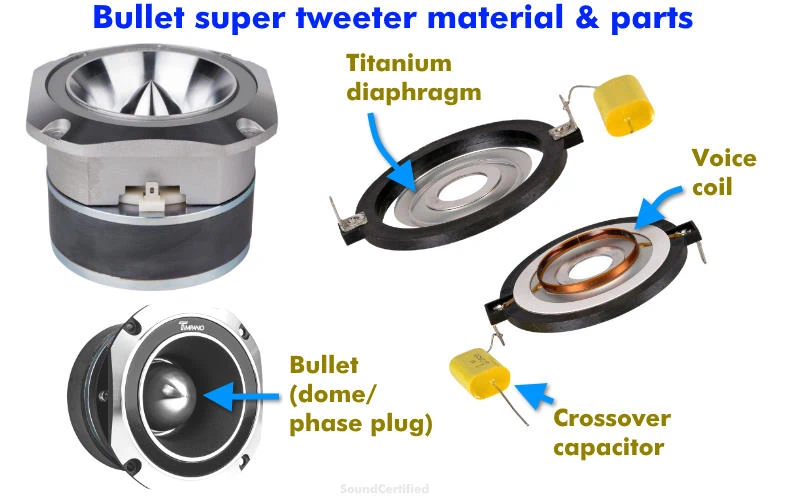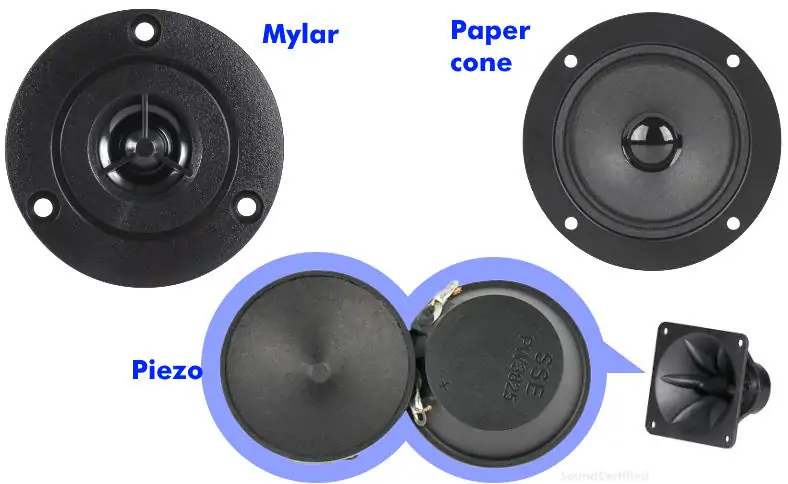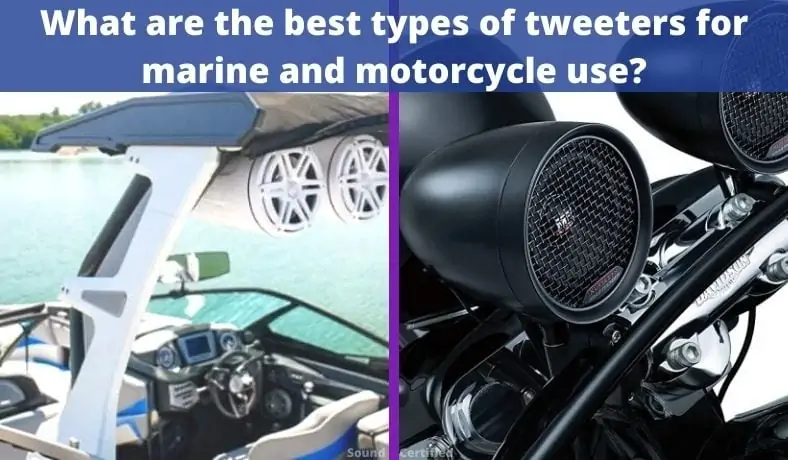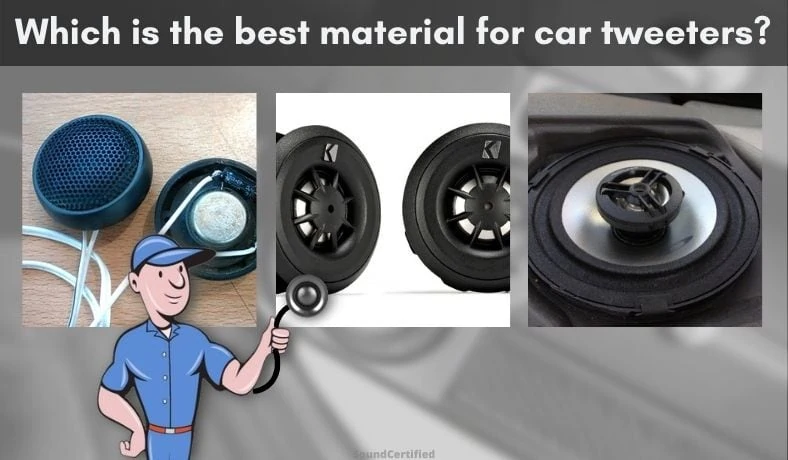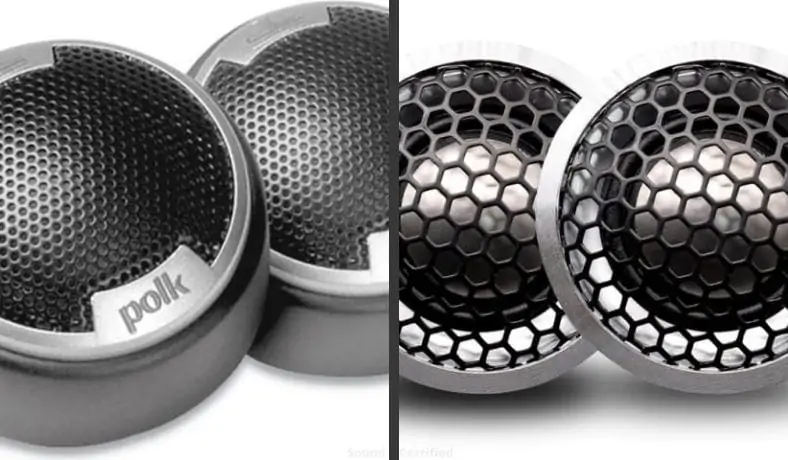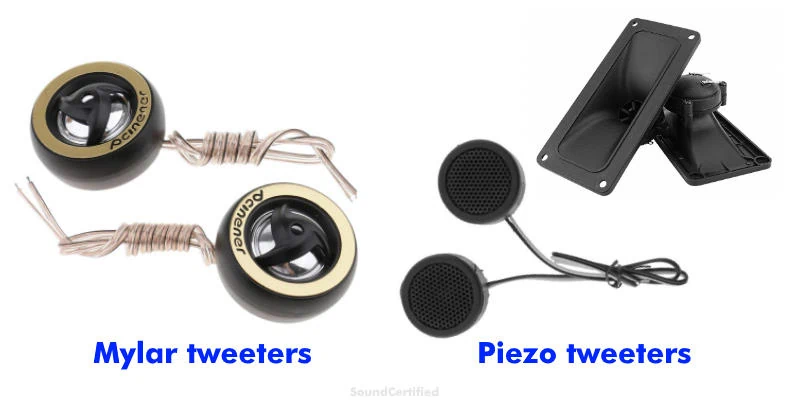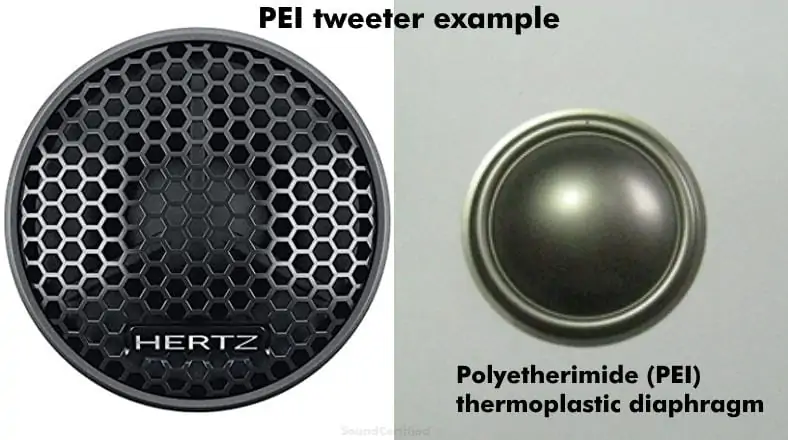Tweeters are great but some really are better than others. When it comes to performance, sound quality, and durability, which is the best tweeter material?
Read on to find out more!
Contents
What is the best tweeter material?
What speaker cone tweeter material sounds the best?
The truth is that there’s not a single best tweeter material. Tweeter sound quality depends on the design choices made and the overall performance. It especially depends on the behavior of the cone or dome during higher output levels.
However, generally speaking, some of the best tweeter materials are:
- Metal dome tweeters: aluminum, titanium, beryllium, or other variations.
- Silk dome or textile soft dome tweeters
- Ceramic dome
The frequency response even between two tweeters of the exact same dome material can be very different. Whenever possible, check the frequency response graph if provided by the manufacturer.
Silk dome vs metal dome tweeters
Silk dome tweeters and soft dome tweeters generally have a reputation for being smoother sounding (less “harsh”) than metal tweeter types, making them a good choice in many cases due to their affordable cost. It’s sometimes due to things such as:
- Frequency response of the metal tweeter being higher or peaking in upper frequencies.
- Ringing or resonances in the dome/tweeter that create audible side effects and affect the sound quality perceived.
Soft dome tweeter materials like treated cloth, silk, Sonatex, etc. tend to have better damping than single layer metal dome tweeter diaphragms. Also, soft dome models don’t have a ringing effect like metal domes and the frequency response tends to be smoother in general.
That said, good quality metal dome tweeters can have excellent detailed sound and crispness that’s hard to beat. In my personal experience, you’ll get the most out of them if you’re able to tune them using an equalizer, tone controls, or other methods.
Alternatively, you can pick a metal dome model with a high frequency response comparable to a soft dome in order to avoid what you may hear as harshness in the frequency response.
What material do super tweeters use?
A typical high-performance bullet super tweeter uses aluminum or titanium dome materials although lower-cost models may use something less such as Mylar. That doesn’t mean they’re necessarily more expensive, though, as many are still fairly affordable (under $50 each).
Super tweeters have very high sensitivity (104 to 108dB for example) and crisp, detailed sound at higher outputs so a stiff but lightweight semi dome tweeter material is important.
Other tweeter materials
Some other materials (although less common) are Kapton used in ribbon tweeter designs or PEI dome tweeters available for both home audio and car audio system use. Compression horn tweeter models often use one of the materials listed above in addition to phenolic.
PEI tweeters are less common but can be a great choice as well. I’ll cover them in more detail below.
Which tweeter materials are not recommended?
Some tweeter material options that aren’t ideal are:
- Mylar and other plastic types (Mylar especially is very common for budget car speakers such as coaxial models or cheaper component speaker sets). Mylar and other low-cost plastic hard dome tweeter types generally have disappointing high frequency sound performance.
- Paper cone tweeters like those found in piezo tweeters, some home stereo speakers, and occasionally car speakers as well. Their performance is generally very poor in addition to being less durable than other types – especially outside of a home environment.
Additionally, silk dome tweeter or cloth dome tweeter types aren’t a good choice in certain environments unless they’re rated for them as I’ll cover below.
Which types of tweeters are best for marine use or motorcycles?
The best types of tweeter materials for marine use, motorcycles, and other outdoor power vehicles are:
- Hard dome tweeter types: Metal, ceramic, or similar hard dome tweeter materials.
- Plastic/thermoplastic types: PEI, Mylar, or other plastic types (with Mylar being less preferred and more of a budget choice).
- Metal coated plastics or other hybrid materials.
Tweeters used outdoors (especially in bass boats, ski boats, and so on) are exposed to potential moisture, humidity, and temperatures which can cause tweeter domes or speaker cones damage over time.
In fact, many standard car speakers aren’t a good idea to use as the bobbin and voice coil can warp and be damaged by the humidity they’re exposed to. That’s due to how moisture affects paper speaker parts sometimes used.
However, plastic cone car speakers with the right type of tweeter will often work fine, although I’d stay away from the cheapest models. Polk Audio, Kicker, MTX, Alpine, and other great brands typically have some that will work well in marine use or motorcycles to give you even more options.
Which is the best material for car tweeters?
In my experience after years of car audio installation both professionally and for my own projects (as well as a LOT of listening time) here are my recommendations:
- Silk dome car tweeters work well for most people, there are a ton of choices out there, and they’re affordable for most people.
- Metal dome tweeters can sound fantastic and add to musical detail but in my opinion, they’re a better choice if you’re after higher sound quality and have the ability to tame them.
In my opinion, the best car tweeter depends on your needs, budget, installation difficulty, and the sound you’re after. Usually silk dome tweeters are a good compromise of all of those.
Another good thing about those listed above is that they have a moderately high sensitivity of about 89 to 93dB at 1 watt/1 meter typically. You won’t have to worry about them being hard to hear vs your mids or other full range speakers.
Silk dome vs metal dome tweeters for car audio
Silk tweeter models usually sound good to most people out of the box and without any tuning needed (aside from tweeter attenuation for matching). Price-wise they’re typically around $25-$50 or so, with some also having ferrofluid in the voice coil magnet gap for added performance and cooling under more power.
Silk dome tweeters for cars these days have some really unique styles available too if you’re into matching or want something that stands out: machined aluminum bodies, chrome-plated tweeters, and more are available out there.
In my opinion metal dome tweeters can be a good choice for the right person, offer great sound quality, and are very durable although they cost a bit more than silk tweeters. I don’t generally recommend them without a way to tune them to get the best sound from them.
For example, using a decent parametric or graphic equalizer (13 band EQ at the minimum, although I never use less than 31 bands) or a digital signal processor to reduce harsh peaks in the frequency response may be important as I’ve had aluminum dome models that had harsh peaks I had to reduce.
Car tweeters to avoid
I don’t recommend the following types of tweeters for car audio:
- Piezo tweeters
- Mylar or other budget plastic dome types
- Tweeters with no dome info provided
Piezo tweeters are the cheapest of them all and while they’re a super-affordable option, they really don’t sound good and won’t deliver the sound you’ll want in a quality speaker system. They’re useful for high-volume applications though, but even then you can do better.
As I mentioned earlier, plastic dome types like Mylar are not ideal for sound quality and usually are found on budget coaxial car speakers, component speaker sets, or sold separately. However, they’re still often a good upgrade from factory tweeters/speakers and a lot of people don’t mind them.
In that case they may be a good option for you if you’re on a budget.
Tweeters with no material listed are usually using a very low-cost material – usually some type of plastic. Those I suggest you avoid unless it’s not important.
What is a PEI dome tweeter?
PEI tweeters use polyetherimide (PEI) thermoplastic as the tweeter dome material. Compared to Mylar tweeters they often have a higher price point and can be good performers. They’re less common, however.
From the outside, they can look similar to standard low-cost Mylar and other plastic tweeter speaker models but they’re actually a higher performance material design.

